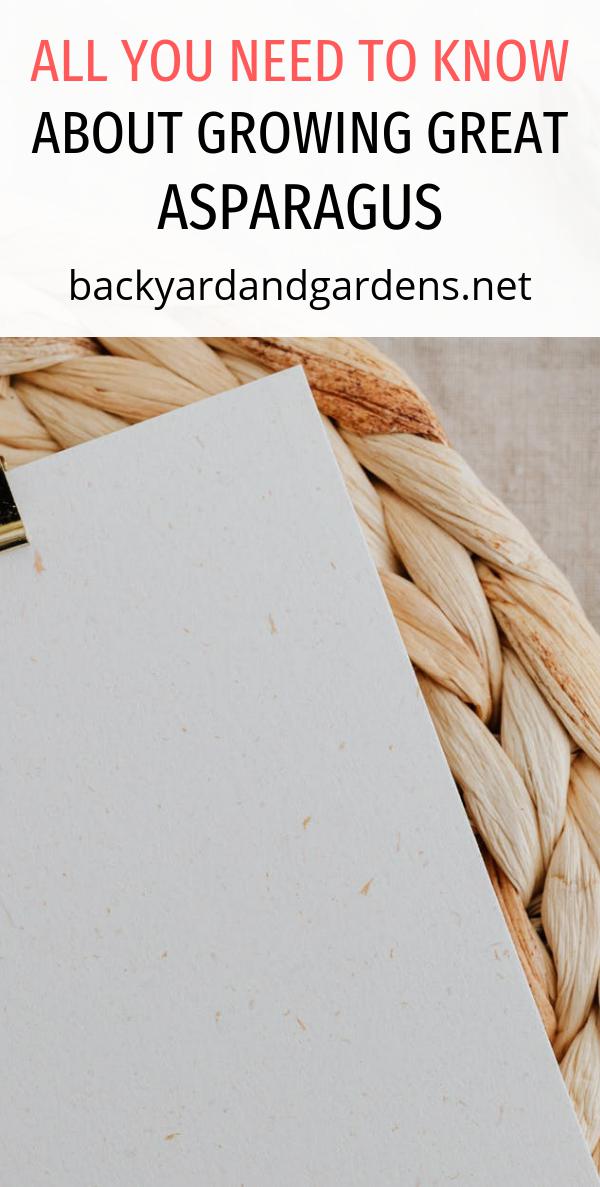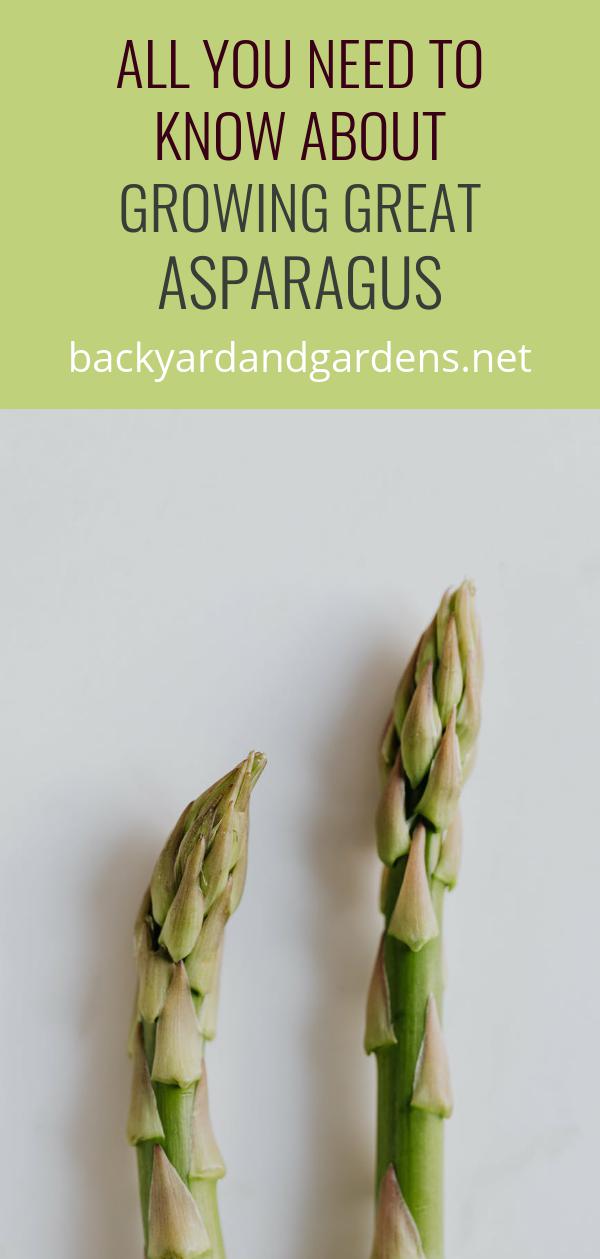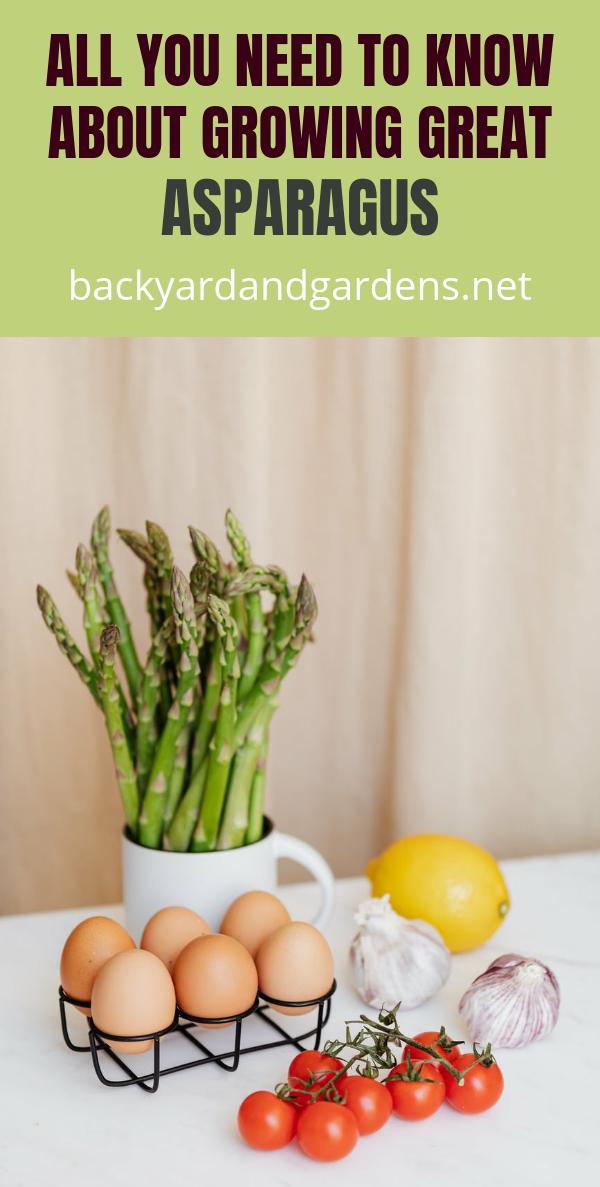All You Need To Know About Growing Great Asparagus
I went out to feed the birds this morning – the temperature was comfortably above freezing, and a downy woodpecker was telegraphing his territorial rights on the nearest utility pole. I realized it was time to feed the asparagus.
If you love fresh, succulent spears of asparagus but rankle at the price you pay for them (and the quality you get) at the grocery store, consider growing your own. Unlike most vegetables, asparagus is a perennial plant – one planting will return year after year, and a well-tended bed can produce an abundant crop for 25 years or more. Asparagus is an investment, and like most investments, requires some specific steps in order to reap rewards.

DIRT IS EVERYTHING
Asparagus needs soil which is rich in organic matter and drains easily. If your soil is like mine – clay that is as unworkable as Play-Doh – you’ll need to incorporate goodies such as leaf mold, aged manure, and compost the season before you plant. Asparagus also likes full sun, so be sure that your plot gets a minimum of 6 hours of sunlight during the growing season.
BUY GOOD STOCK
It’s always helpful to purchase top-quality asparagus roots from a reputable nursery or Seedhouse. Two-year roots will yield a crop the second year after planting. The roots should be plump, well-branched, and look healthy.
VARIETIES
Look for time tested varieties, preferably those termed “super male” (it’s the male asparagus that yields the spears. The female exhibits the ferny foliage and produces berries during the summer.) Several good varieties are:
- Jersey King
- Mary Washington
- Purple Passion (this one is purple until it’s cooked or steamed.)
- Planting Your Bed
Asparagus is best planted in the spring but is hardy enough to go into the ground as soon as the soil is workable. Asparagus roots need to be placed into a trench which is approximately 12″ deep and 12″ wide. Space your plants 12″ – 18″ apart. Spread the roots when you plant for maximum growth.
Cover with 6″ of soil, and water in. When the plants begin to grow, continue to cover – or hill – with the remaining soil.
When your plants are up, mulch your bed with leaves or wood chips to retain moisture and keep weed growth down. You can also use a good pre-emergent such as Preen, which is formulated for asparagus beds.
FEEDING
Asparagus plants love to eat and need to be fed three times a year with a high-nitrogen fertilizer. Generally, feed your bed in early spring before any spears are visible, a few weeks after you’ve harvested the last spears, and in the fall. Organic growers like to top-dress their bed each fall with an aged horse or chicken manure. Heat from the decaying manure helps to keep the roots from freezing during harsh winters as well as providing food for the plants and texture for the soil.

ENJOYING YOUR HARVEST
And what can you do with your first crop? Steamed asparagus is delicious with a herb butter topping, mixed with rice, or au gratin. You can also chop very young spears and eat them raw or with a veggie dip.
